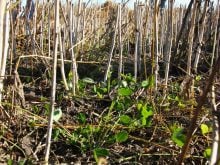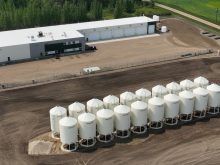Buying and selling water occurs in an oblique way in Canada through the sale of goods that are produced using water and that contain water.
But two speakers with differing philosophies talked at separate meetings in Lethbridge last week about a more direct method of buying and selling water.
Lorne Taylor, chair of the Alberta Water Research Institute and a former Alberta environment minister, spoke at a water conference June 1 while Council of Canadians chair Maude Barlow addressed a public meeting later that day.
Taylor said establishing an Alberta water market is an option to consider.
Read Also

Environmental farm group has Ottawa’s attention
In 2021, Farmers for Climate Solutions published a report on how Canada should reduce emissions from agriculture. Not long after, the federal government implemented most of the recommendations in the report.
Such a market could involve trading licences or rights to give rights holders an opportunity to profit from water they don’t use. It might also encourage more efficient use of available water, he added.
Taylor said such a system could work in watersheds where there is a moratorium on water licences, such as the Oldman River basin.
“We already have a water market,” he said, referring to a deal in which the Western Irrigation District transferred water to the County of Rocky View for $15 million so that the county could service the Cross Iron Mills Mall and other Balzac businesses.
“It wasn’t a direct sale, but it was an indirect $15 million benefit.”
Taylor said at least 44 other water trades have occurred in Alberta, though details are unknown.
“But these are not transparent … and if you have a transparent water market with clear regulations, clear policies, then you’ll know what water is worth. You’ll know the value of water. And any water that changes hands will be public and will be transparent.”
Barlow has a different perspective on water markets.
She said other countries’ experiences with water markets set a disturbing precedent.
Barlow cited Australia as an example, where the government began to confer water rights in 1993. Large companies traded and accumulated those rights, often at the expense of smaller businesses and farmers.
Investors then entered the picture by buying rights and leasing rights and land to tenant farmers. That was followed by the entry of brokers buying and selling water in a free-for-all.
“This is where Alberta is going to go if we allow water rights to take place, to take hold here,” she said.
“The government is saying, ‘oh, but the people of Alberta will still own the water. All we’re doing is giving the companies the right to sell and trade shares.’ That’s what they said in Australia.”
In an interview, Barlow said water rights tend to induce hoarding rather than conservation. The profit motive that governments say will encourage people to save water so that they’ll have more to sell doesn’t occur.
“Remember, in Alberta, already the licences are in the hands of a fairly small group of corporate interests and some big municipalities.”
Barlow said it would be a windfall for some to convert licences to rights, and in their interests to gather as many as they can. The result would be water controlled by a smaller number of private interests.
“How can you claim that water belongs to the people? How could you even claim that water belongs to Alberta anymore if that’s allowed to happen,” she said.
“Government will say, ‘we’re not going to go that far.’ That’s what they said in Australia. But piece by piece by piece, you hand the power over to these companies, and piece by piece by piece, ordinary people lose.”
Taylor acknowledged in his speech that the idea of a water market is controversial but could formalize and regulate what already occurs.
“We are moving there, we already have it and I believe the first place it will probably be tried will be the South Saskatchewan basin. The market has to be regulated.”
Barlow called it “a very, very dangerous trend” that removes access.
“Water for everyone, as a basic fundamental right, has to be guaranteed.”















